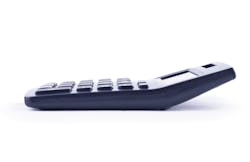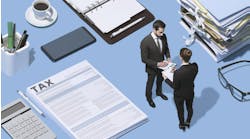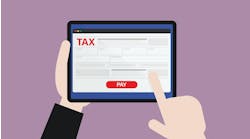In late August 2017, Category 4 Hurricane Harvey ripped through the Houston metropolitan area, inflicting more than $125 billion in damage and affecting more than 13 million people. In a four-day period, many areas received more than 40 inches of rain, causing catastrophic flooding and displacing hundreds of thousands. One of those displaced just happened to be Kathryn van der Pol and her shop, Adolf Hoepfl & Son Garage, which is located just north of Houston.
The shop was forced to close for a week as it recovered from the devastation.
Had this been ten years ago, the closing and the associated lost business expenses would’ve devastated the shop. At that time, Kathryn was just coming into the fold, working in the business 60–70 hours per week as she tried to get a grasp on budgeting and forecasting sales. The shop was breaking even, but had significant cash flow problems. It wasn’t until she took a critical eye to the most important financial documents in the business—income statement, balance sheet, and statement of cash flow—that she was able to effectively forecast sales and budget appropriately.
The success of that shift is obvious: When Hurricane Harvey hit, the $1.7 million shop was able to dip into the reserve it’s built over those 10 years, and easily cover payroll and lost business expenses.
The Backstory
Kathryn and her husband, Sybren, bought the shop in 2004 from company founder Adolf Hoepfl. Sybren graduated with a degree in business administration from the University of New Orleans, and worked on cars most of his life, so the shop part came naturally for him.
Kathryn spent her time teaching Latin and history until they bought the shop, and says she faced a significant learning curve with the business operations.
She initially planned to work at Adolf Hoepfl’s part time and have Sybren take over the majority of the business. When it became clear that Sybren needed some help with the day-to-day operations, Kathryn stepped in as a service advisor, and took over payroll, bookkeeping and advertising.
They started working with a consultant and friend of Sybren, Gary Gunn, to go over budgeting, forecasting and projections.
The Problem
Around 2008, in the midst of the recession, Adolf Hoepfl & Son was breaking even, though they were consistently doing well saleswise. Sales for 2008 ended at $732,000, with a gross profit of $422,000. When they dug into the numbers, it turned out that the more sales they had, the more their cash flow was trending down.
It was a major turning point, and the van der Pols realized that they really needed to watch what they were doing financially and look beneath the surface.
With processes handed down from the previous owners, Kathryn was strictly looking at her profit and loss statement (income statement), and QuickBooks for her budgeting, and realized that she was missing crucial information to find where the money was in her shop and what the true cost of doing business was.
She set a goal to reach $1 million in annual revenue and knew she had some work to do to get there. That involved budgeting for profit.
The Solution
One of the main things she had to look at was knowing what the shop’s operating expenses were. And this involved turning the shop’s budgeting focus into four main areas:
1) Using the balance sheet:
She found there were five significant things that weren’t going to show up on her income statement or QuickBooks:
—Mortgage payments.
—Investments in major assets. These generally don’t show up as expenses, but rather as an asset..
—Payroll liability, like Medicare or Social Security payments.
—Credit card debt.
—Employee loans.
Gunn told her that the income statement doesn’t tell you everything as a business operator, and to get the whole picture, she had to look at the balance sheet to fully understand her cash flow.
For instance, she found that if you’ve bought parts but haven’t had to write the checks for them yet, it can be very misleading if you simply look at your checking account. She started to make sure that big expenditures, like the purchase of a lift a few years ago, were recorded accurately on the balance sheet and not just observed on the income statement or QuickBooks.
2) Building a reserve:
Gunn also told her that they needed to start building a reserve, which needed to provide at least three months of emergency operating funds. He also told her to build up an additional fund for capital expenses in the case of any major company damages.
For example, one of Gunn’s clients would transfer the profit from his business into a separate bank account at the end of every month, essentially starting over from scratch every month. She started adopting this philosophy at Adolf Hoepfl, which has helped the shop build capital and reserve funds.
3) Participating in classes:
In 2014, Kathryn participated in a Goldman Sachs business course for small business owners, with a semester-long, mini-MBA program.
From this, she learned another level of training, which looked at marketing, leadership and financing, how to make business pitches and manage her staff properly. It was essentially a crash course in running a business, and she says the content was invaluable.
One of her main projects had to do with making a business plan for adding a hypothetical extension onto her shop to do oil changes more efficiently and add more space. She learned the importance of cash flow statements and how vital they are for the bank to see when you’re borrowing money for a major project like this.
Now that she’s actually putting an extension on her shop, she feels a lot more confident in the process.
4) Following the trends:
She started using trending tools that looked at the cost of labor, cost of parts and sales. Gunn provided an Excel tool with formulas for each of these departments, and it averaged her data out for three-, six- and twelve-month periods. This gives a projection of what the shop should earn in each subsequent month, and gives her something to strive toward.
Though her shop is currently in a tight economy with the surrounding damage from the hurricane, she says these projection tools are helping her rebuild and stay competitive. Above all, she says, they’ve helped her stay disciplined in her budgeting and stick to a specific plan.
The Aftermath
After working with Gunn and taking the Goldman Sachs classes, van der Pol says everything really came into focus from a budgeting standpoint.
Her shop saw steady increases, with her shop finally reaching the $1 million revenue mark in 2014. It saw a big jump after 2015, where her revenue boosted to $1.34 million and $746,000 in gross profit. The shop now is trending to $1.6 million, with over $800,000 in gross profit.
Van der Pol says it’s hard to feel as though you have a full handle on your business’s financing, but with everything she’s learned, she feels she can handle whatever comes her way next.
The Takeaway
Van der Pol says it’s scary to know the truth within the ins and outs of your shop’s budget, but it’s a necessary evil. Most business owners started as technicians, which is one crucial part of understanding the business. But another key aspect, she says, is fully understanding the numbers and figures.
“To have a good business you have to understand numbers,” van der Pol says. “You have to know where you are, and have to know how to adjust and where you want to get you.”
Expert Advice: The Importance of Looking Beyond Your P&L Statement
Gary Gunn, formerly of Turnaround Tour
Through his consulting group, Turnaround Tour, Gary Gunn changed van der Pol’s entire concept of budgeting. He explains the importance of looking beyond the P&L to get the whole picture.
You can have a P&L with $40,000, but if your cash is shrinking, then, to me, you don’t make a profit. Profit to me is when your cash is going up, not because your P&L says you’ve made a profit. There’s so many things that could eat up that $40,000 like interest or mortgage payments, so you can actually show a profit and have negative cash.
This all ties back to what I call the true cost of doing business, or TCoDB. This is inclusive on the items with your balance sheet that drains cash that never hit your P&L. It tells you how much gross profit you need every year in order to stack up cash. That’s what Kathryn knows that a lot of other shop owners don’t because she’s been educated on that.
SHOP STATS: Adolf Hoepfl & Son Garage Location: Houston, Texas Operator: Kathryn van der Pol Average Monthly Car Count: 475 Staff Size: 12 Shop Size: 7,000 sq ft; Annual Revenue: $1.7 million



